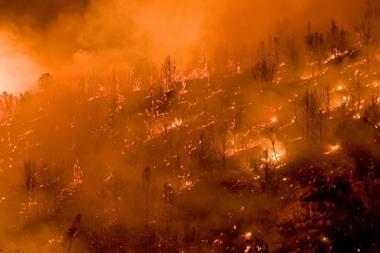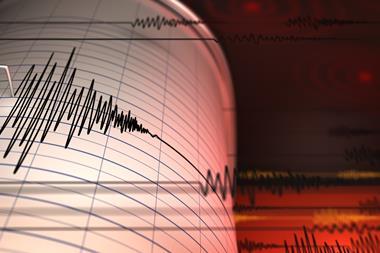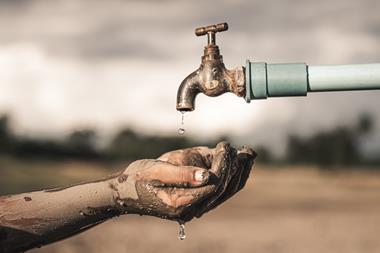The success of the 1987 Montreal Protocol is proof all is not lost in the fight against climate change
The ozone layer sits high up in the stratosphere, the region of the atmosphere about 15 to 50 km above our heads. While ozone is present throughout the atmosphere, 90% of it resides in this layer where it absorbs high energy ultraviolet (UV) radiation in sunlight, shielding all life on earth from its harmful effects.
Scientists were first concerned about potential damage to the ozone layer from human activities in the 1970s, although the impacts were thought to be relatively modest.
But in 1985 scientists from the British Antarctic Survey published alarming results of a precipitous decline in ozone over Antarctica, later confirmed with NASA’s satellite data.
By the following year, extensive fieldwork confirmed the smoking gun – this “ozone hole” was there because of chlorofluorocarbons (CFCs), a family of chemicals used as refrigerants and propellants in aerosol cans, amongst other applications.
Phasing out CFCs
The rest of the story is a heart-warming example of science-informed action, uniting the world’s governments and – eventually – the manufacturers of CFCs to completely phase out their production and develop less damaging alternatives.
Together with its subsequent amendments, the enactment of the 1987 Montreal Protocol has reversed the destruction of the ozone layer and averted massive increases in UV.
These would have led to disasters for humanity, including crop failures and millions of cases of skin cancer and cataracts, as well as widespread ecological breakdown.
And as CFCs are powerful greenhouse gases, enacting the Montreal Protocol has also already avoided an additional 0.5°C of global warming, perhaps as much as 2°C by the end of the century, if we include its protection of plants and their important role in storing carbon.
All of this led former UN General Secretary Dr Kofi Annan to dub the Montreal Protocol as not only “the most successful environmental treaty in history”, but also “perhaps the most successful international agreement to date.”
Science and the Montreal Protocol
An often-cited reason for the success of the Montreal Protocol is its formal inclusion of independent science to monitor its implementation and guide any amendments.
Through three expert panels, the United Nations Environment Programme and the World Meteorological Organization sponsor major reports every four years on 1) the present and likely future state of the ozone layer and levels of ozone depleting substances, 2) the environmental impacts of ozone depletion, and 3) the technological and economic issues related to the CFC replacements.
The latest report from the first panel, the 2022 Scientific Assessment of Ozone Depletion, has been recently completed and released. This report is written by multiple scientists, and summarises and assesses the new knowledge in the peer-reviewed literature.
From this report we learn, for instance, that the Antarctic ozone hole is continuing to get smaller, that ozone is clearly recovering in the upper part of the stratosphere over the whole globe, and that we expect the global ozone layer to recover to its 1980 values by the middle of this century.
What we can learn
There is much to learn from the Montreal Protocol for climate change. Having science embedded in the Protocol’s processes means that the parties to the agreement – i.e., the world’s governments – can respond to new evidence and increase their ambition as necessary.
Indeed, the Montreal Protocol has been adjusted and amended five times to strengthen it, add new chemicals, and accelerate phase-outs.
Additionally, the protocol’s “Multilateral Fund” provides support for countries with small per-capita emissions of ozone depleting substances (including developing countries), accelerating their transition to less harmful substances.
Moreover, recognising the different development trajectories of certain countries, the Montreal Protocol allowed for different phase-out timetables.
For climate change, the relevant international treaty is the Paris Agreement. This was signed at the 2015 United Nations Climate Change Conference and has the goal of moving to “net zero” emissions of greenhouse gases by the middle of the century to hold the increase in global mean surface temperatures to no more than 1.5°C above pre-industrial levels.
Like the Montreal Protocol, this will need us to be ready to increase our ambition for decreasing fossil fuel emissions as well as having mechanisms for supporting those nations and communities that are less able to make a swift transition away from fossil fuel use.
At the same time, we must recognise that, while hugely successful, the Montreal Protocol dealt with a limited number of chemicals, with a limited number of uses, made by a limited number of companies.
Phasing out fossil fuels will impinge on everyone and everything, requiring fundamental changes to the economy.
Nevertheless, the climate science is clear on what will happen if we do not wean ourselves off carbon.
The 2022 Scientific Assessment of Ozone Depletion report is freely available here, along with its Executive Summary and a booklet with 20 Questions and Answers About the Ozone Layer.
Dr Paul Young is technical director and senior climate specialist, JBA Risk Management




















No comments yet